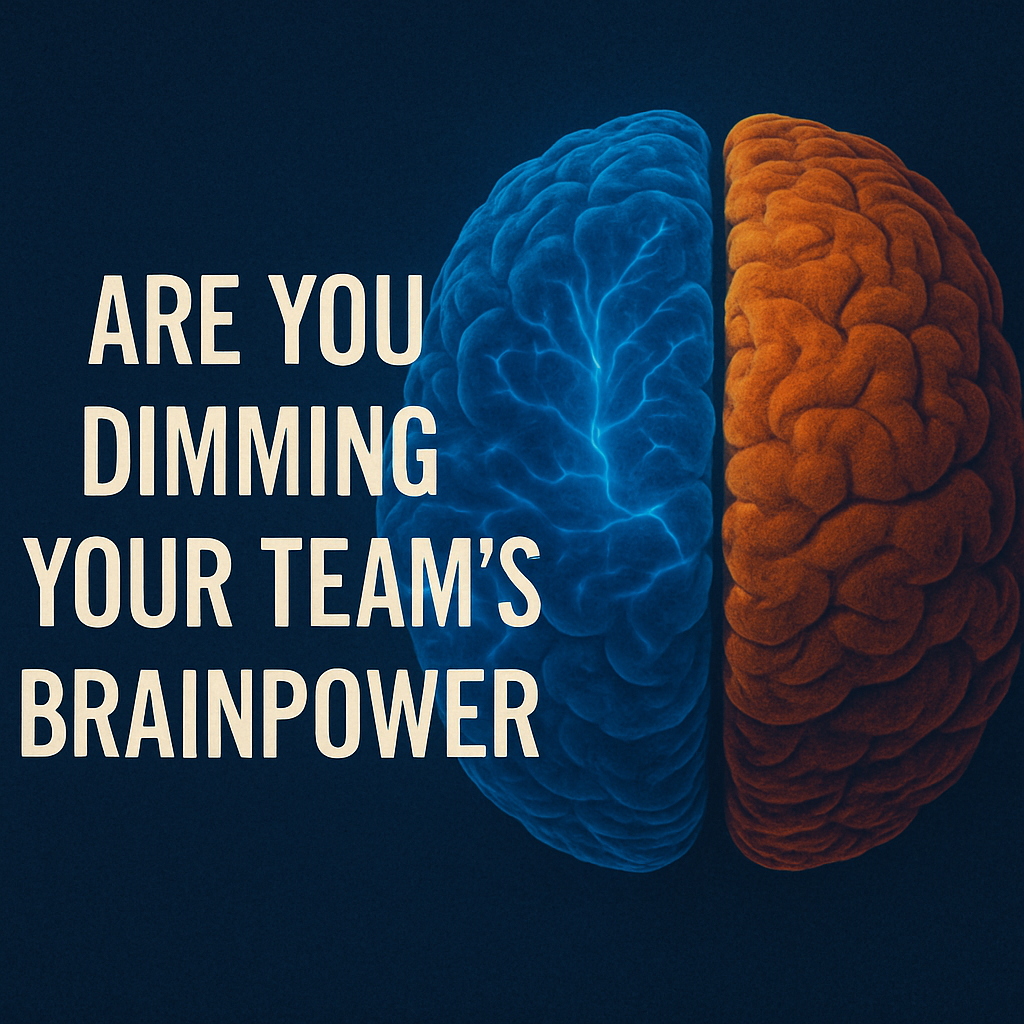
Let's get right to it: if you're a leader operating from a mindset soaked in pessimism, constant anxiety, or a chronic negativity bias, you might be doing more harm than you think. Not just emotionally but neurologically. And not just to yourself—but to the entire team you lead.
Sound dramatic? Maybe. But science is backing it up.
🧠 The Brain on Negativity: What the Scans Say
A fascinating study from Amen Clinics examined brain scans and cognitive data from nearly 20,000 patients diagnosed with anxiety disorders. Researchers found that people with a heightened negativity bias—those who instinctively interpret situations in the most pessimistic light—had reduced blood flow in areas of the brain associated with higher-order thinking and emotional regulation - namely, the frontal, temporal, and parietal lobes.
Here's the kicker: reduced blood flow was also found in the cerebellum, an area traditionally linked to motor control but increasingly understood as crucial for emotional regulation, memory, and cognitive efficiency. That's right—the areas that enable clear-headed decision-making, creative thinking, and emotional stability were underperforming in people predisposed to negative thinking.
Now pause and ask: if this is what chronic negativity does to an individual brain, what happens when the person leading your team—your manager, director, or CEO—functions with the same cognitive wiring?
🧠 The Contagion of a Negative Mindset
Leadership isn't just about strategy and output. It's about influence. And mindsets—especially emotional ones—are contagious.
Harvard Business School's Sigal Barsade coined "emotional contagion" to describe how emotions pass from one person to another, especially in tight-knit workgroups. Leaders, often the most visible and psychologically central figures in a workplace, are emotional amplifiers. Their mood, their tone, and, yes, their negativity bias have a ripple effect.
A leader who begins every meeting by spotlighting what's going wrong, who fixates on obstacles instead of outcomes, or who catastrophizes uncertainty doesn't just tank morale—they may be reshaping the cognitive performance of their teams.
⚠️ The Hidden Cost: Neurological Fatigue and Performance Decline
Imagine the cascading effect:
And when do cognitive fatigue and emotional burnout become norms? Decision-making slows, innovation stalls and safety mistakes increase. In fast-paced, high-stakes environments—manufacturing floors, sales teams, leadership huddles—that's not just inefficient. It's dangerous.
🔍 But Wait—Is This Just Soft Science?
Let's be skeptical for a moment. Some will argue this is all psychology babble. "Come on, we all deal with stress. This is business, not therapy." Fair. But take a look at the mounting body of neurobiological evidence.
And if psychological safety depends on leadership tone, attitude, and mindset… well, negativity might be the performance's stealth saboteur.
🔄 So What Can Leaders Actually Do?
Let's be real. If that's not your style, you won't wake up tomorrow and become a motivational speaker. But you can stop unknowingly dimming your team's mental circuits. Here are three simple, evidence-based ways to flip the switch:
1. Audit Your Language
When you talk, do you lead with threats or opportunities? Does your language revolve around risk, regret, reasons why not, possibility, progress, and what's next?
Take a week to record yourself during key meetings. Listen back. You might be shocked at how much your leadership language unintentionally skews toward doom.
2. Flip the Meeting Script
Start each meeting with a small win. A success story. A note of gratitude. It primes the brain to look for what's working, not just what's wrong. According to Barbara Fredrickson's "Broaden and Build" theory of positive emotions, positivity literally broadens attention and builds cognitive resources.
In neuroscience, positive affect increases prefrontal cortex activity, where planning, innovation, and logic reside. You're not just improving morale but upgrading the team's mental processor.
3. Encourage Micro-Positivity Practices
No one’s asking for kumbaya circles. But tiny habits like:
These small acts can reshape your team's culture—and the neurochemistry—.
🧩 Final Word: Leadership Shapes Brains
If you think your mindset only impacts your performance, think again. Your inner dialogue becomes your outer dialogue. Your outer dialogue becomes your team's atmosphere. And that atmosphere becomes their cognitive climate.
Leadership is a neurological responsibility. Like environmental toxins can pollute physical spaces, emotional toxins can pollute mental spaces. If your mindset casts cognitive shadows, your team may operate in the dark.
So before your next staff meeting, ask yourself:
"Am I lighting up the frontal lobes—or dimming the whole room?"
Because the best leaders don't just lead with strategy.
They lead with clarity. And increasingly, they lead with neuroscience in mind.